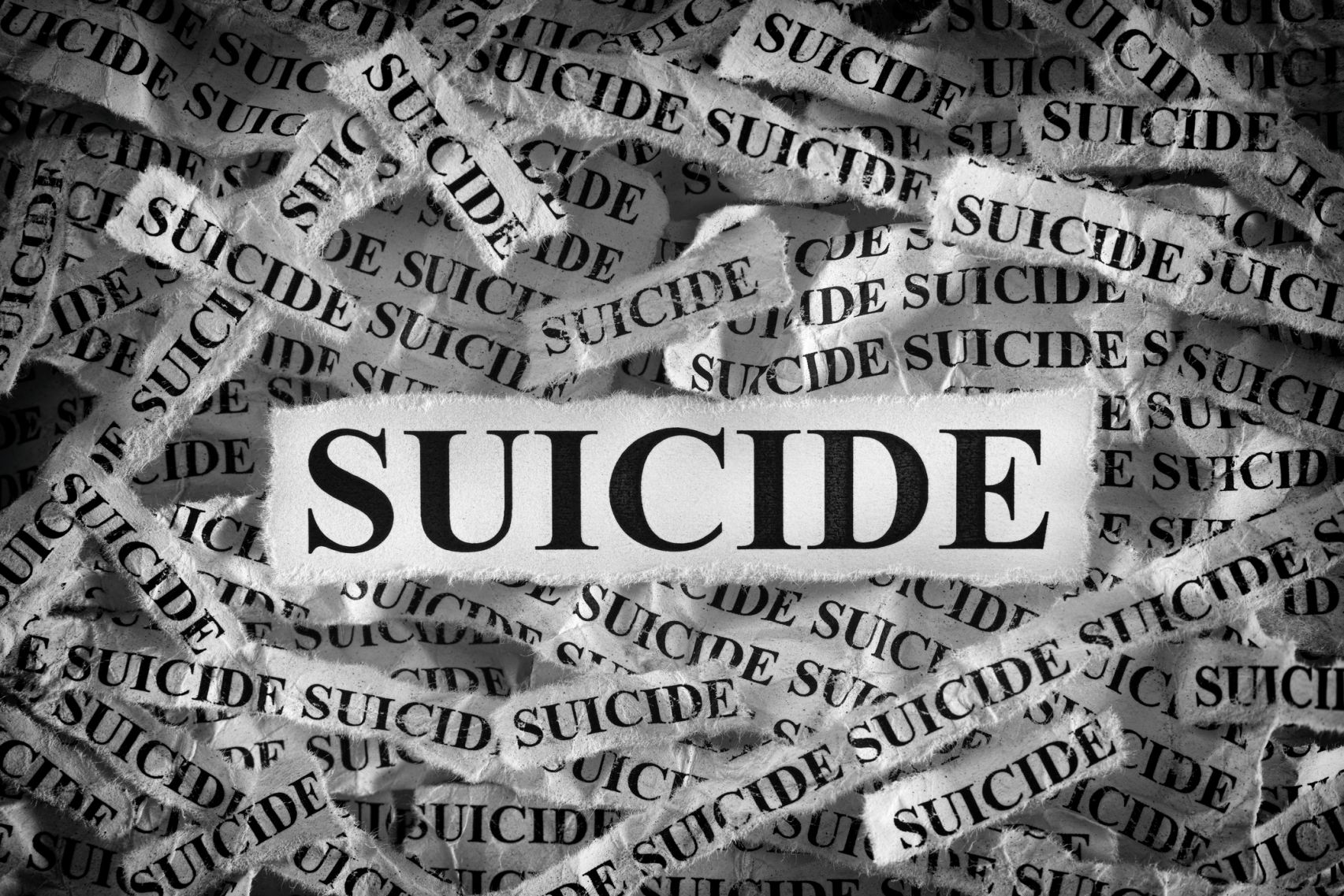Trending...
- Demystifying CBD & THC Levels: Ayah Labs' Easy-to-Follow Quantification Guide
- Controversial Vegan Turns Rapper Launches First Song, "Psychopathic Tendencies."
- T-TECH Partners with Japan USA Precision Tools for 2026 US Market Development of the New T-TECH 5-Axis QUICK MILL™
The Centers for Disease Control (CDC) states that the holiday suicide myth supports misinformation about suicide and might actually hinder prevention efforts.
CLEARWATER, Fla. - Californer -- As communities observe International Survivors of Suicide Day on November 22nd, the Citizens Commission on Human Rights (CCHR) Florida is taking the opportunity to address a persistent and harmful myth surrounding suicide during the holiday season. Contrary to widespread media narratives and public perception, CDC data definitively shows that suicide rates actually decrease in December and are among the lowest of the year—making the holiday suicide myth a dangerous piece of misinformation that may be undermining suicide prevention efforts.
Despite hundreds of billions of dollars spent annually on mental health interventions, suicide remains a significant public health crisis in the United States. More than 49,300 people died by suicide in 2023, with suicide ranking as the 11th leading cause of death nationally and the second leading cause of death for individuals aged 10-34. Additionally, an estimated 1.5 million Americans attempted suicide in 2023, and 5.3% of U.S. adults (approximately 13.5 million people) reported having serious thoughts of suicide in the past 12 months. Yet even as resources continue to increase—with excess costs arising from mental health inequities alone reaching an estimated $477.5 billion in 2024—effective suicide prevention remains elusive.
CCHR, a watchdog organization dedicated to protecting mental health human rights, believes that widespread misinformation surrounding suicide significantly clouds prevention efforts. One of the most persistent and damaging myths is that suicide attempts surge during the holiday season.
The Media's Role in Perpetuating False Narratives
The Annenberg Public Policy Center has tracked media reports on suicide since 2000 and found that during the 2023-2024 holiday season, 58% of articles linking the holidays and suicide perpetuated the holiday suicide myth, while only 42% debunked it. This pattern of media coverage has ensured that the misconception remains deeply embedded in public consciousness, creating unwarranted anxiety during the holiday season while potentially diverting attention and resources away from periods of actual higher suicide risk.
More on The Californer
In a nationally representative survey conducted by the Annenberg Public Policy Center in 2023, four out of five adults incorrectly selected December as the "time of year in which the largest number of suicides occur"—even though the other months provided as choices typically have much higher suicide rates.
What the Data Actually Shows
The CDC has emphatically stated that the holiday suicide myth supports misinformation and might actually hinder prevention efforts. According to analysis of CDC data from 2022 and 2023, December consistently had the lowest average daily suicide rate of the year, ranking 12th in suicide rates among all months. November ranked 11th, and January ranked 10th. In stark contrast, the highest suicide rates occurred in the spring and summer months, with June, July, and August ranking 1st, 2nd, and 3rd respectively. This seasonal pattern has remained consistent over several decades and is observed in the southern hemisphere as well, where suicide rates peak during their summer months (December-February), further confirming that suicide rates are primarily influenced by seasonal factors rather than holiday-specific stressors.
Additional Concerns About Mental Health Treatment
Beyond the perpetuation of false information, CCHR has raised concerns about the growing reliance on antidepressant medications. According to new data released by the CDC's National Center for Health Statistics in 2025, more than 1 in 10 U.S. adults took prescription medication for depression in 2023, with women (15.3%) more than twice as likely to take these medications as men (7.4%). Additionally, the prevalence of depression in U.S. adolescents and adults increased 60% in the past decade.
Research published in Pediatrics in 2024 revealed that antidepressant dispensing to adolescents and young adults increased by 66.3% from January 2016 to December 2022, with the rate of increase accelerating by 63.5% after the COVID-19 outbreak in March 2020. Notably, this dramatic expansion in antidepressant usage has occurred despite documented evidence that side effects from these medications can include suicidal thoughts and feelings.
More on The Californer
Furthermore, research has challenged the efficacy of suicide risk assessments. In a 2017 Scientific American article, psychiatrists Declan Murray and Patrick Devitt reported that 40 years of research on suicide risk assessment determined there is "no statistical method to identify patients at high-risk of suicide in a way that would improve treatment."
International Survivors of Suicide Day and a Call for Awareness
As November 22nd approaches, marking International Survivors of Suicide Day, the focus shifts to honoring those who have lost loved ones to suicide and supporting survivors in their grief and recovery. This observance underscores the importance of accurate, evidence-based information about suicide prevention and mental health treatment options that do not rely on potentially dangerous psychiatric drugs.
CCHR Florida invites individuals seeking accurate information about suicide and psychiatric drug side effects to visit the CCHR Center located in downtown Clearwater. Staff members are available to provide resources, education, and support for those navigating mental health concerns or seeking to understand treatment alternatives. Visitors can learn about the documented risks of psychiatric drugs, explore options for reporting adverse drug reactions, and access information on evidence-based mental health approaches. For more information, to report abuse, or to visit the CCHR Center in downtown Clearwater, please call 1-800-782-2878 or visit www.cchrflorida.org.
About CCHR: Initially established by the Church of Scientology and renowned psychiatrist Dr. Thomas Szasz in 1969, CCHR's mission is to eradicate abuses committed under the guise of mental health and enact patient and consumer protections. L. Ron Hubbard, founder of Scientology, first brought psychiatric imprisonment to wide public notice: "Thousands and thousands are seized without process of law, every week, over the 'free world' tortured, castrated, killed. All in the name of 'mental health,'" he wrote in March 1969.
Despite hundreds of billions of dollars spent annually on mental health interventions, suicide remains a significant public health crisis in the United States. More than 49,300 people died by suicide in 2023, with suicide ranking as the 11th leading cause of death nationally and the second leading cause of death for individuals aged 10-34. Additionally, an estimated 1.5 million Americans attempted suicide in 2023, and 5.3% of U.S. adults (approximately 13.5 million people) reported having serious thoughts of suicide in the past 12 months. Yet even as resources continue to increase—with excess costs arising from mental health inequities alone reaching an estimated $477.5 billion in 2024—effective suicide prevention remains elusive.
CCHR, a watchdog organization dedicated to protecting mental health human rights, believes that widespread misinformation surrounding suicide significantly clouds prevention efforts. One of the most persistent and damaging myths is that suicide attempts surge during the holiday season.
The Media's Role in Perpetuating False Narratives
The Annenberg Public Policy Center has tracked media reports on suicide since 2000 and found that during the 2023-2024 holiday season, 58% of articles linking the holidays and suicide perpetuated the holiday suicide myth, while only 42% debunked it. This pattern of media coverage has ensured that the misconception remains deeply embedded in public consciousness, creating unwarranted anxiety during the holiday season while potentially diverting attention and resources away from periods of actual higher suicide risk.
More on The Californer
- Call24x7.AI Launches Next-Generation AI Phone Agent
- Inboox.ai Introduces AI-Powered Email Analysis for Ecommerce Marketers
- Inboox.ai Launches the Largest Ecommerce Email Swipe File Powered by AI Analysis
- Short Sale Real Estate Agent Los Angeles, CA | Expert Short Sale Services
- London Art Exchange Emerges as a Leading Force in UK Contemporary Art, Elevating Three Artists to Secondary-Market Success
In a nationally representative survey conducted by the Annenberg Public Policy Center in 2023, four out of five adults incorrectly selected December as the "time of year in which the largest number of suicides occur"—even though the other months provided as choices typically have much higher suicide rates.
What the Data Actually Shows
The CDC has emphatically stated that the holiday suicide myth supports misinformation and might actually hinder prevention efforts. According to analysis of CDC data from 2022 and 2023, December consistently had the lowest average daily suicide rate of the year, ranking 12th in suicide rates among all months. November ranked 11th, and January ranked 10th. In stark contrast, the highest suicide rates occurred in the spring and summer months, with June, July, and August ranking 1st, 2nd, and 3rd respectively. This seasonal pattern has remained consistent over several decades and is observed in the southern hemisphere as well, where suicide rates peak during their summer months (December-February), further confirming that suicide rates are primarily influenced by seasonal factors rather than holiday-specific stressors.
Additional Concerns About Mental Health Treatment
Beyond the perpetuation of false information, CCHR has raised concerns about the growing reliance on antidepressant medications. According to new data released by the CDC's National Center for Health Statistics in 2025, more than 1 in 10 U.S. adults took prescription medication for depression in 2023, with women (15.3%) more than twice as likely to take these medications as men (7.4%). Additionally, the prevalence of depression in U.S. adolescents and adults increased 60% in the past decade.
Research published in Pediatrics in 2024 revealed that antidepressant dispensing to adolescents and young adults increased by 66.3% from January 2016 to December 2022, with the rate of increase accelerating by 63.5% after the COVID-19 outbreak in March 2020. Notably, this dramatic expansion in antidepressant usage has occurred despite documented evidence that side effects from these medications can include suicidal thoughts and feelings.
More on The Californer
- Golden State at the Golden Globes, Film & Television Tax Credit awardees spotlight California's Star Power
- Melospeech Inc. Announces Acquisition of Selected Assets from Georgia-Based Practice Talk and Play Speech Therapy, LLC
- myLAB Box Expands, Becoming the First and Only At-Home Testing Company to Serve the Entire Family—Human and Furry—with New Pet Intolerance Test
- Entering 2026 with Expanding Footprint, Strong Industry Tailwinds, and Anticipated Q3 Results: Off The Hook YS Inc. (N Y S E American: OTH)
- Long Beach Notifies Residents of Nationwide CodeRED Cybersecurity Incident
Furthermore, research has challenged the efficacy of suicide risk assessments. In a 2017 Scientific American article, psychiatrists Declan Murray and Patrick Devitt reported that 40 years of research on suicide risk assessment determined there is "no statistical method to identify patients at high-risk of suicide in a way that would improve treatment."
International Survivors of Suicide Day and a Call for Awareness
As November 22nd approaches, marking International Survivors of Suicide Day, the focus shifts to honoring those who have lost loved ones to suicide and supporting survivors in their grief and recovery. This observance underscores the importance of accurate, evidence-based information about suicide prevention and mental health treatment options that do not rely on potentially dangerous psychiatric drugs.
CCHR Florida invites individuals seeking accurate information about suicide and psychiatric drug side effects to visit the CCHR Center located in downtown Clearwater. Staff members are available to provide resources, education, and support for those navigating mental health concerns or seeking to understand treatment alternatives. Visitors can learn about the documented risks of psychiatric drugs, explore options for reporting adverse drug reactions, and access information on evidence-based mental health approaches. For more information, to report abuse, or to visit the CCHR Center in downtown Clearwater, please call 1-800-782-2878 or visit www.cchrflorida.org.
About CCHR: Initially established by the Church of Scientology and renowned psychiatrist Dr. Thomas Szasz in 1969, CCHR's mission is to eradicate abuses committed under the guise of mental health and enact patient and consumer protections. L. Ron Hubbard, founder of Scientology, first brought psychiatric imprisonment to wide public notice: "Thousands and thousands are seized without process of law, every week, over the 'free world' tortured, castrated, killed. All in the name of 'mental health,'" he wrote in March 1969.
Source: Citizens Commission on Human Rights of Florida
0 Comments
Latest on The Californer
- NEW Luxury Single-Family Homes Coming Soon to Manalapan - Pre-Qualify Today for Priority Appointments
- Introducing The 'A Hot Set' 2026 Media Kit
- Dominic Pace Returns to the NCIS Franchise With Guest Role on NCIS: Origins
- Anderson Periodontal Wellness Attends 5th Joint Congress for Ceramic Implantology
- Vallejo Realtor Bruno Versaci Continues to Lead the Market
- California: Governor Newsom's SAFE Task Force partners with Long Beach to address encampments
- UK Financial Ltd Completes Full Ecosystem Conversion With Three New ERC-3643 SEC-Ready Tokens As MCAT Deadline Closes Tonight
- Governor Newsom helps provide more than a thousand Californians with homes
- AI Real Estate Company Quietly Building a National Powerhouse: reAlpha Tech Corp. (N A S D A Q: AIRE)
- Inboox.ai Surpasses 1,000 Users After Public Launch of Email Inspiration and AI Analysis Platform
- Inkdnylon Expands National Uniform Embroidery Services
- Health Care Foundation for Ventura County is an Action for Women's Health Awardee
- Appliance EMT Expands Appliance Repair Services to Portland, OR and Vancouver, WA
- Next Week: The World's Best Young Pianists Arrive in Music City for the 2025 Nashville International Chopin Piano Competition
- Revenue Optics Builds Out Its Dedicated Sales Recruiting Firm with Strategic Addition of Christine Schafer
- Hydrofast Elevates the Holiday Season: The C100 Countertop RO System Merges Smart Tech with Wellness for the Perfect Christmas Gift
- How a Local Dentist Helps La Jolla Families Maintain Healthier and Brighter Smiles?
- Affordable Luxury Bracelets You'll Love: Timeless Style Meets Holiday Sparkle
- Cleaner Communities Ahead: Countrywide Rental Launches Upgraded Portable Restrooms in Alton
- California: Governor Newsom proclaims Pearl Harbor Remembrance Day




